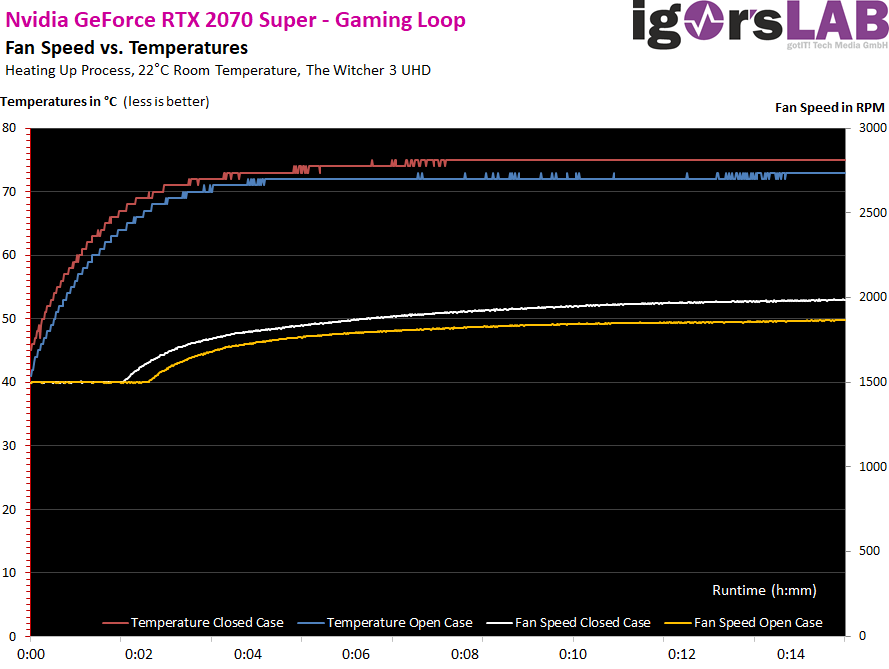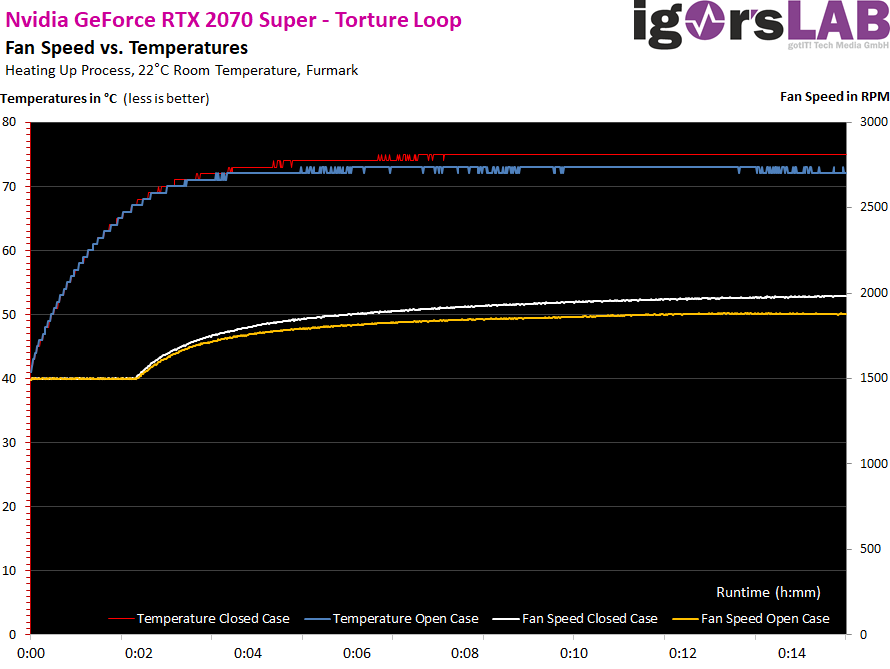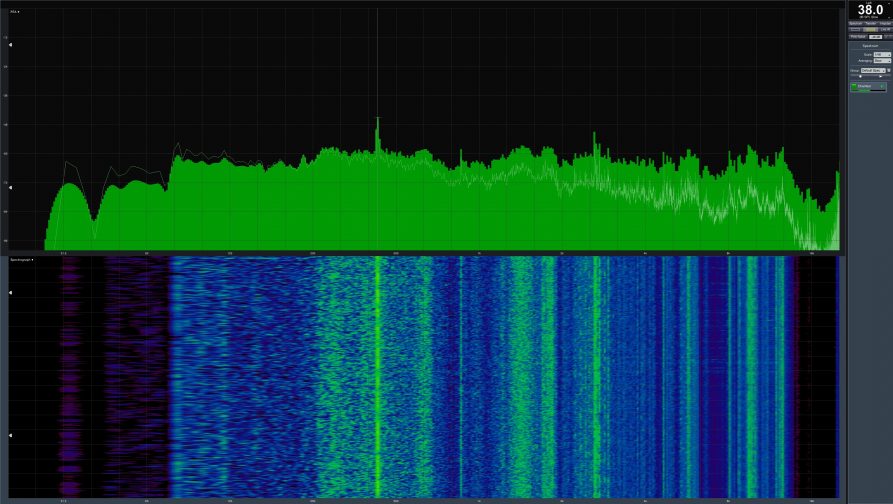There is no fan stop, the fans always rotate, even in the idle. Are there still approx. 1500 rpm, it rises to approx. 1900 rpm (approx. 2000 rpm in a closed structure), depending on the housing and airflow. That is still fine, albeit already audible.

By the way, this is no different with the stress test.

Let's look at the measured values again in direct comparison to the Founders Edition as a tabular listing:
| RTX 2070 Super | RTX 2080 FE | |
|---|---|---|
| Fan speeds Open Benchtable Maximum | 1902 rpm (Gaming, Peak) | 1907 rpm (Gaming, Peak) |
| Fan speeds Open Benchtable Average | 1894 rpm (warmed up) | 1897 rpm (warmed up) |
| Fan Speeds Closed Case Maximum | 2018 rpm (Gaming, Peak) | 1959 rpm (Gaming, Peak) |
| Fan Speeds Closed Case Average | 2002 rpm (warmed up) | 1942 (warmed up) |
| Noise Emission (Air) Average | 38.0 dB(A), Closed Case (Peak) | 39.6 dB(A), Closed Case |
| Noise Emission (Air) Idle | 31.2 dB(A) | 31.3 dB(A) |
| Sound characteristic / hearing impression | rather noisy, hardly lower-frequency shares | rather noisy, hardly lower-frequency shares |
| Coil-feathers/electric noises | low, only for very high FPS numbers and for load changes | low, only for very high FPS numbers and for load changes |
Sound Spectrum
The measured 38 dB(A) are based on the measured 2000 rpm in the closed housing. I applied the same gaming load to the open set-up in the measuring room, but the fans were set to approx. 2000 rpm to be able to adjust this value exactly. The result is one tick below the level of the GeForce 2080 FE, despite similar fan speeds. This is quite astonishing, because I would have expected a tie. But I found the reason later.
The soundscape is audible and you can also perceive and measure light (low-frequency) engine noise for light noise (see peak on the spectral analysis above). The noise comes from the turbulences of the rotor blades and is defined by an almost metallic noise and siren of the two fans. However, the chirping of the coils is always present (see also peaks from 3 KHz in the analysis). Nevertheless, the RTX 2080 FE had the much naser chirping in the high-frequency range, which probably explains the difference in the measured values.
- 1 - Einführung und Übersicht
- 2 - Tear Down: Platine und Kühler
- 3 - The Division 2
- 4 - F1 2019
- 5 - Far Cry 5
- 6 - GTA V
- 7 - Metro Exodus
- 8 - Shadow of the Tomb Raider
- 9 - Total War: Three Kingdoms
- 10 - World War Z
- 11 - Leistungsaufnahme im Detail
- 12 - Temperatur, Takt, Infrarot
- 13 - Lüfter und Lautstärke
- 14 - Zusammenfassung



































Kommentieren